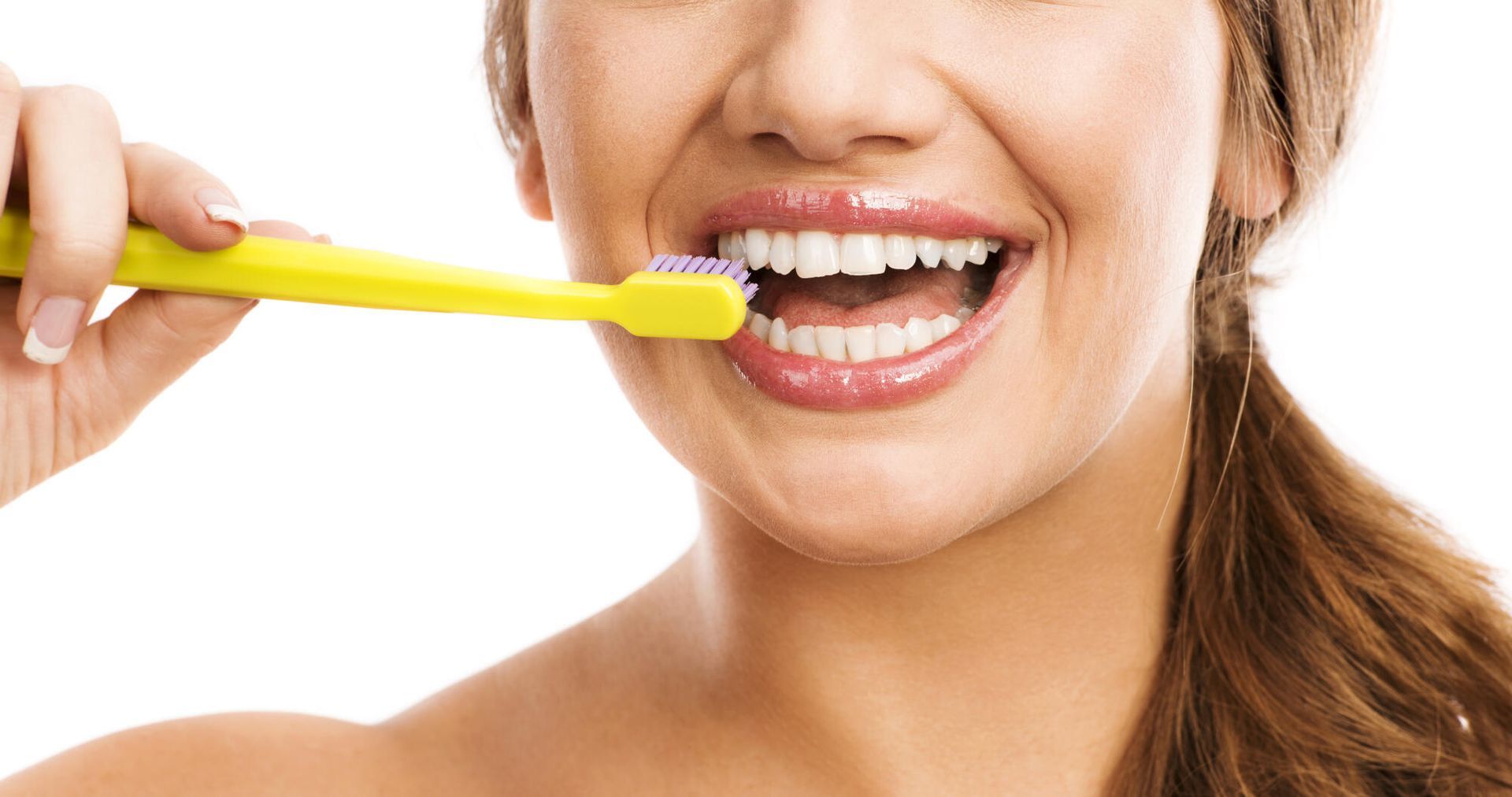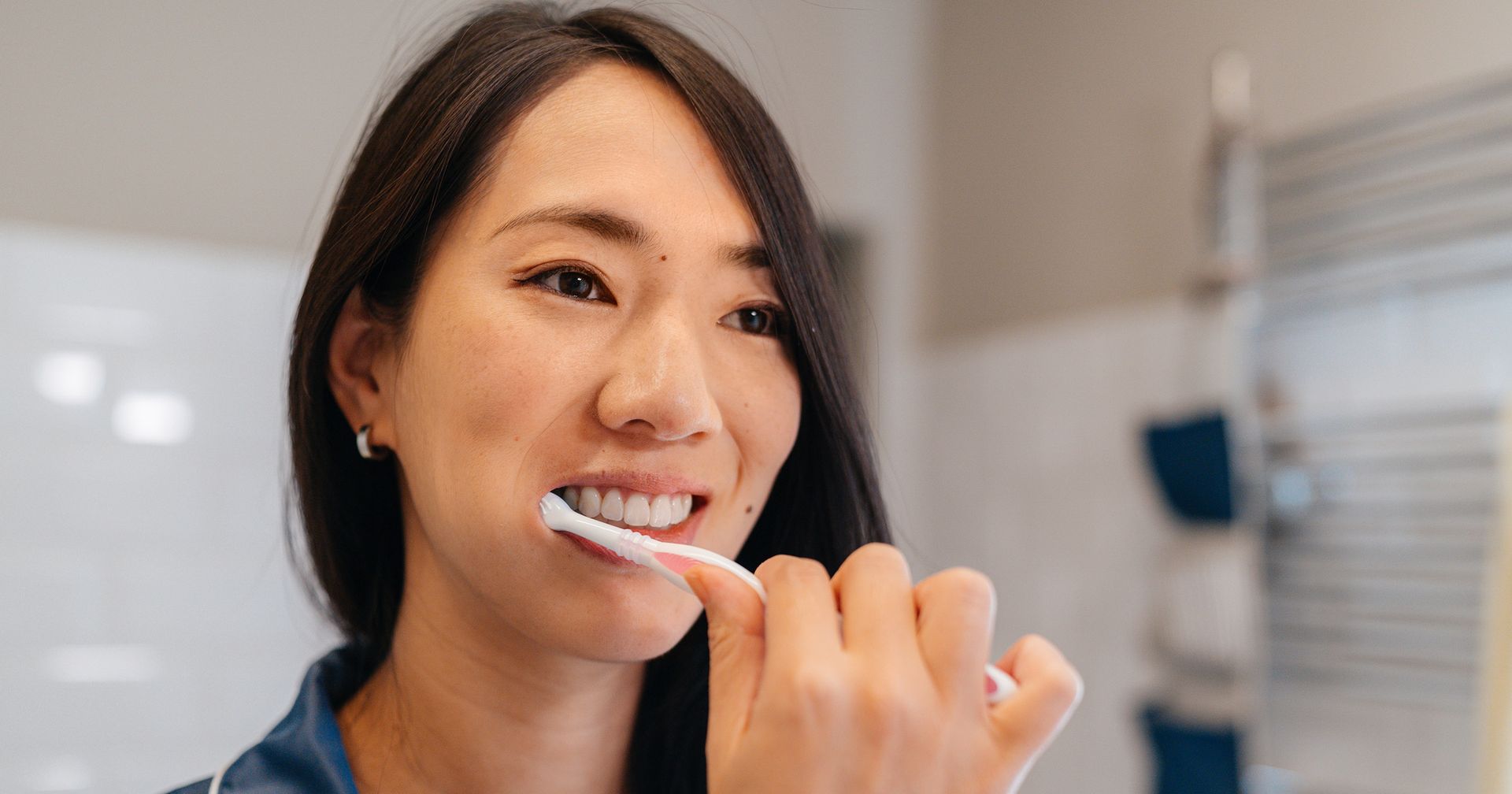Is Teeth Whitening Safe for Sensitive Teeth? What You Need to Know
Teeth whitening isn't just popular; it's a booming global industry. In 2021, people around the world spent about $6.9 billion on whitening treatments. By 2030, that number is expected to reach $10.6 billion.
Why the big jump? With more people choosing to improve their dental appearance, the teeth whitening market has grown, driving significant advancements in whitening products and technology.
At the same time, tooth sensitivity remains a common concern. Many people hesitate to try whitening treatments because they worry about discomfort or worsening sensitivity. The good news is that safe, effective options exist to manage this.
This guide will walk you through what you need to know about teeth whitening for sensitive teeth, including gentle options and what to avoid. Let's break down the science and the solutions to brighten your smile with confidence.
What Causes Sensitive Teeth?
To understand how to whiten safely, it helps to know what makes teeth sensitive in the first place. Sensitivity often stems from:
- Worn enamel that exposes the dentin underneath
- Receding gums that leave tooth roots exposed
- Cavities or cracked teeth
- Overuse of whitening products in the past
- Brushing too hard or using abrasive products
These issues create tiny openings that let hot, cold, or acidic foods reach the nerves inside your teeth, triggering pain. Whitening products, especially those with strong bleaching agents, can aggravate these openings if you're not careful.
Safe Whitening Techniques That Work
Whitening treatments work by using ingredients like hydrogen peroxide or carbamide peroxide to dissolve stains. For sensitive teeth, the challenge is finding a method that is strong enough to whiten without causing pain or inflammation.
With the help of a dentist and the right products, you can get good results without discomfort.
Professional In-Office Whitening
If you want fast and noticeable results, a visit to a dentist is your safest bet. Dental professionals use custom formulas and monitor the process to protect your enamel and gums. They can also apply desensitizing treatments before or after the session.
Why it's safer: A dentist can adjust the strength and timing of the whitening gel to match your sensitivity level. They'll also take steps to avoid any irritation.
Bonus tip: Ask about fluoride treatments or potassium nitrate gels to reduce discomfort after whitening.
Take-Home Whitening Trays From Your Dentist
Another smart option is a dentist-prescribed whitening kit with custom trays. Unlike over-the-counter kits, these trays are molded to your teeth, which means better coverage and less risk of gel leaking onto sensitive gums.
Why it's safer: Lower-concentration peroxide is used over a longer period, giving you control and minimizing sensitivity.
How to use them: Typically, you'll wear the trays between 30 minutes and an hour daily for one to two weeks. To achieve the best results, follow the dentist's directions exactly.
Whitening Toothpaste
Whitening toothpastes formulated for sensitive teeth contain gentle polishing agents to remove surface stains gradually. When combined with remineralizing treatments, such as fluoride or calcium phosphate formulas, they help rebuild and strengthen enamel that might be worn or weakened.
What to look for:
ADA Seal of Acceptance
Labeled for sensitivity
Gentle, non-abrasive ingredients like hydrated silica
Keep in mind that toothpaste won't give dramatic results, but it's a safe and steady way to maintain or slightly improve whiteness over time.
Whitening Options to Avoid With Sensitive Teeth
While it's tempting to grab whatever promises the fastest results, some products and methods can actually make sensitivity worse. Skip these:
- Whitening strips with high peroxide levels: They're easy to overuse and often irritate gums
- DIY treatments like lemon juice or baking soda: These may erode enamel and make sensitivity worse
- Charcoal-based products: These are often too abrasive for daily use
- Unregulated online products: If it's not dentist-approved, avoid it
How to Prep Your Teeth for Whitening
Before starting any whitening treatment, get your teeth and gums in good shape. This lowers the risk of discomfort and improves your results. Here's how:
- Visit a dentist: Get a cleaning and exam to check for cavities or gum issues
- Use sensitive toothpaste: Begin two weeks before whitening
- Don't skip meals: Eating before whitening can reduce acid irritation and protect your stomach if you accidentally swallow a small amount of gel
- Avoid acidic foods: Stay away from citrus, soda, or vinegar-based foods before and after whitening sessions
These small steps make a big difference when combined with the correct whitening method.
Managing Sensitivity During and After Whitening
Some people experience mild sensitivity even with gentle products. That doesn't mean you need to stop treatment; it means your teeth need a little extra care. Try these sensitive teeth solutions:
- Use desensitizing gel: A dentist can recommend one to apply before or after whitening
- Shorten whitening sessions: If using trays, try reducing time to 15-20 minutes
- Whiten every other day: Give your teeth time to recover in between treatments
- Use a soft-bristled brush: It helps reduce irritation, but avoid brushing your teeth right after whitening
- Rinse with fluoride mouthwash: This strengthens enamel and protects against further discomfort
- Cool, not cold: Avoid ice-cold drinks for a day or two after whitening
If sensitivity persists or worsens, stop treatment and talk to your dentist. You may need a different approach or a lower-strength formula.
Natural Whitening Options for Sensitive Teeth
If you're hesitant to use bleaching agents at all, here are some options to consider:
- Oil pulling: Swishing coconut oil may reduce surface stains and improve gum health, though research is limited
- Crunchy fruits and vegetables: Apples, carrots, and celery can help remove plaque through natural abrasion
- Limit staining foods and drinks: Cut back on red wine, coffee, and dark sauces, and rinse your mouth with water after you eat or drink
- Drink staining beverages through a straw: This limits contact with your front teeth
These aren't replacements for whitening treatments, but they support a brighter,
healthier-looking smile over time.
When to See a Dentist
If you're unsure which method is best or have had bad experiences in the past, don't guess; ask a dentist. They'll help you find a personalized approach that gets results without causing harm. They can:
- Identify the root cause of your sensitivity
- Treat underlying issues like gum disease or enamel loss
- Recommend professional whitening options that are safe
- Provide custom trays, desensitizers, and follow-up care
- Monitor your progress and adjust your treatment plan as needed
Professional whitening advice is key, especially when sensitivity is involved. Don't skip this step.
Questions to Ask Before Whitening
Not sure where to start? Here are some important questions to ask your dentist:
- Is my enamel healthy enough for whitening?
- Which method do you recommend based on my sensitivity level?
- Are there any desensitizing products I should use before and after?
- How white can I realistically expect my teeth to get?
- How long will the whitening results last with my lifestyle?
- What can I do to maintain results without causing sensitivity?
- Are there any risks or side effects I should watch for during treatment?
- How often can I safely repeat whitening treatments?
When Whitening Might Not Be the Right Choice
Whitening isn't for everyone. Your dentist may advise against it if you have:
- Active gum disease or untreated cavities
- Severe enamel erosion
- Allergies to peroxide-based ingredients
- You're pregnant or breastfeeding (consult needed first)
Whitening for People with Dental Work
Whitening products don't change the color of crowns, veneers, or fillings. That means restored teeth will stay the same shade while natural teeth get lighter, which can create uneven results.
To fix this, dentists often recommend whitening first, then replacing older restorations for a better match if needed. It's also smart to check for worn or damaged fillings before whitening to avoid sensitivity or complications.
If you're unsure how your dental work will respond, consult a professional before starting treatment.
Whitening Alternatives for Extreme Sensitivity
If even gentle peroxide whitening causes discomfort, there are other options to protect sensitive teeth
while improving your smile. Consider the following:
Professional Enamel-Safe Polishing
This treatment involves gently removing surface stains and buildup from your teeth using specialized polishing tools and pastes. Since it does not use bleaching chemicals, it's safe for sensitive teeth and can be done during regular dental cleanings. It's a good option for mild discoloration.
Dental Bonding and Veneers
Dental bonding uses tooth-colored resin applied directly to your teeth to cover stains or imperfections. Veneers are thin porcelain or composite material shells that are custom-made and bonded to your teeth. Both options can dramatically change the color and shape of your teeth instantly.
Teeth Whitening for Sensitive Teeth: What You Must Know
So, is teeth whitening for sensitive teeth safe? Yes, as long as you take the proper precautions. From professional treatments to over-the-counter options designed for gentle use, there are plenty of effective and safe ways to brighten your smile without triggering pain.
At Simply Smiles, Dr. Sabharwal and our friendly, skilled team offer personalized, affordable dental care backed by advanced techniques to deliver the
best teeth whitening services possible. With memberships in top dental organizations, you can trust
you're in expert hands. Book your appointment today and start showing off the smile you deserve!













